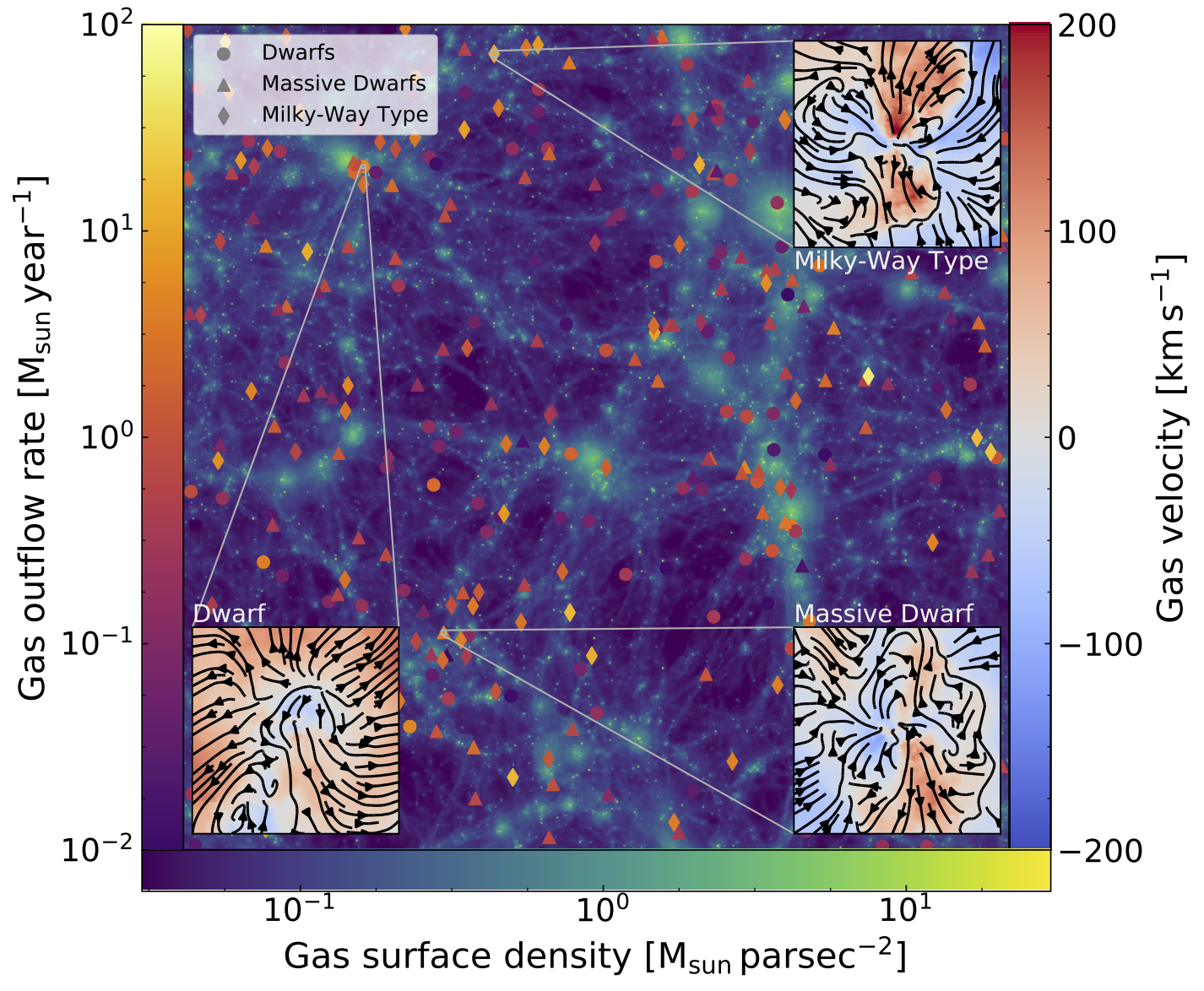Research highlight: AGN in dwarf galaxies
Recent astronomical observations have uncovered actively-accreting central black holes in dwarf galaxies, which has prompted a likely paradigm shift as black holes had previously been neglected in dwarf galaxy models. Research at KICC investigates whether these active galactic nuclei (AGN) could shut down the metamorphosis of gas into stars in dwarf galaxies since a ‘feedback mechanism’ is needed to prevent excessive star formation and match observations. Previously, supernovae had been assumed to be the main feedback mechanism in (massive) dwarfs, though whether supernova feedback alone can be effective enough is still controversial.
We have modelled the impact of AGN activity in dwarf galaxies using simulations of individual galaxies as well as cosmological simulations based on the FABLE simulation suite (encompassing tens of thousands of galaxies, see Figure 1). We find that AGN feedback has a crucial effect on the large-scale gas outflows, significantly increasing both outflow velocities and temperatures. These boosted outflows can suppress fresh gas inflows from the cosmological environment and shut down star formation by depleting the gas reservoir of the host galaxy.
However, note that the AGN efficiency in dwarfs crucially depends on the assumed AGN accretion model, supernova feedback strength and black hole seeding mechanism(s). Next-generation galaxy formation models combined with future deep electromagnetic surveys (e.g. JWST, RST, Athena, Lynx, SKA) and gravitational-wave observatories (e.g. LISA, PTAs, AION) will allow us to break these degeneracies and elucidate the role of AGN feedback in dwarfs
.



